Chrysoula Zerva
Teaching Language Models to Faithfully Express their Uncertainty
Oct 14, 2025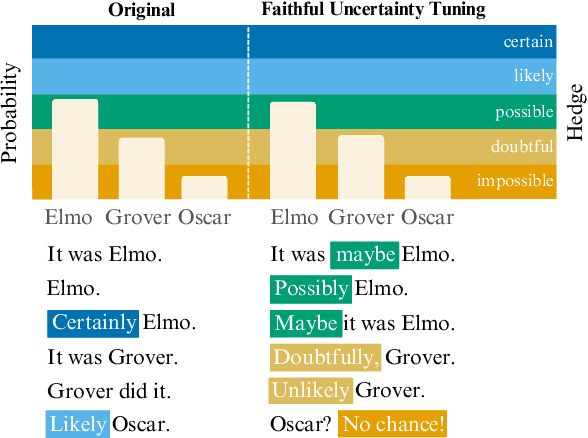
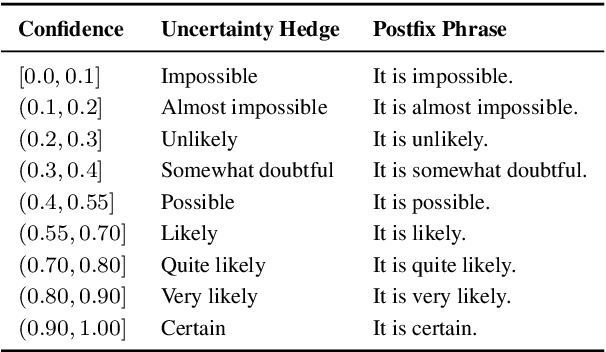

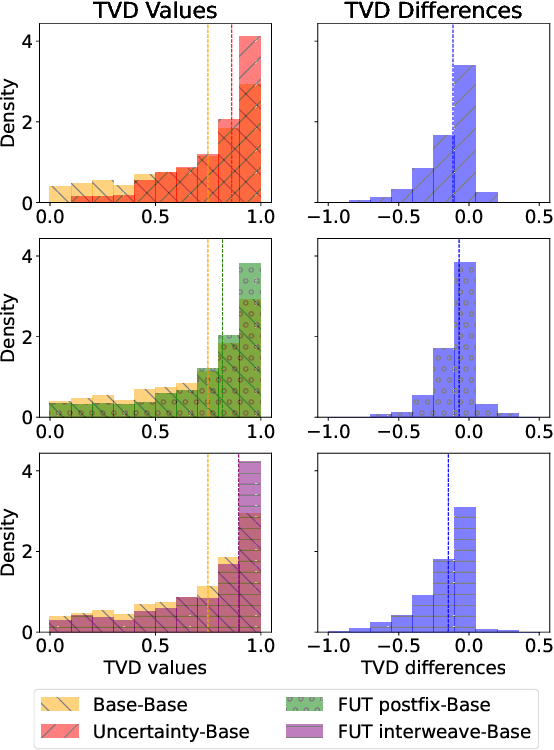
Abstract:Large language models (LLMs) often miscommunicate their uncertainty: repeated queries can produce divergent answers, yet generated responses are typically unhedged or hedged in ways that do not reflect this variability. This conveys unfaithful information about the uncertain state of the LLMs' knowledge, creating a faithfulness gap that affects even strong LLMs. We introduce Faithful Uncertainty Tuning (FUT): a fine-tuning approach that teaches instruction-tuned LLMs to express uncertainty faithfully without altering their underlying answer distribution. We construct training data by augmenting model samples with uncertainty hedges (i.e. verbal cues such as 'possibly' or 'likely') aligned with sample consistency, requiring no supervision beyond the model and a set of prompts. We evaluate FUT on open-domain question answering (QA) across multiple models and datasets. Our results show that FUT substantially reduces the faithfulness gap, while preserving QA accuracy and introducing minimal semantic distribution shift. Further analyses demonstrate robustness across decoding strategies, choice of hedgers, and other forms of uncertainty expression (i.e. numerical). These findings establish FUT as a simple and effective way to teach LLMs to communicate uncertainty faithfully.
Unlocking Latent Discourse Translation in LLMs Through Quality-Aware Decoding
Oct 08, 2025Abstract:Large language models (LLMs) have emerged as strong contenders in machine translation.Yet, they still struggle to adequately handle discourse phenomena, such as pronoun resolution and lexical cohesion at the document level. In this study, we thoroughly investigate the discourse phenomena performance of LLMs in context-aware translation. We demonstrate that discourse knowledge is encoded within LLMs and propose the use of quality-aware decoding (QAD) to effectively extract this knowledge, showcasing its superiority over other decoding approaches through comprehensive analysis. Furthermore, we illustrate that QAD enhances the semantic richness of translations and aligns them more closely with human preferences.
GAMBIT+: A Challenge Set for Evaluating Gender Bias in Machine Translation Quality Estimation Metrics
Oct 08, 2025Abstract:Gender bias in machine translation (MT) systems has been extensively documented, but bias in automatic quality estimation (QE) metrics remains comparatively underexplored. Existing studies suggest that QE metrics can also exhibit gender bias, yet most analyses are limited by small datasets, narrow occupational coverage, and restricted language variety. To address this gap, we introduce a large-scale challenge set specifically designed to probe the behavior of QE metrics when evaluating translations containing gender-ambiguous occupational terms. Building on the GAMBIT corpus of English texts with gender-ambiguous occupations, we extend coverage to three source languages that are genderless or natural-gendered, and eleven target languages with grammatical gender, resulting in 33 source-target language pairs. Each source text is paired with two target versions differing only in the grammatical gender of the occupational term(s) (masculine vs. feminine), with all dependent grammatical elements adjusted accordingly. An unbiased QE metric should assign equal or near-equal scores to both versions. The dataset's scale, breadth, and fully parallel design, where the same set of texts is aligned across all languages, enables fine-grained bias analysis by occupation and systematic comparisons across languages.
Movie Facts and Fibs (MF$^2$): A Benchmark for Long Movie Understanding
Jun 06, 2025Abstract:Despite recent progress in vision-language models (VLMs), holistic understanding of long-form video content remains a significant challenge, partly due to limitations in current benchmarks. Many focus on peripheral, ``needle-in-a-haystack'' details, encouraging context-insensitive retrieval over deep comprehension. Others rely on large-scale, semi-automatically generated questions (often produced by language models themselves) that are easier for models to answer but fail to reflect genuine understanding. In this paper, we introduce MF$^2$, a new benchmark for evaluating whether models can comprehend, consolidate, and recall key narrative information from full-length movies (50-170 minutes long). MF$^2$ includes over 50 full-length, open-licensed movies, each paired with manually constructed sets of claim pairs -- one true (fact) and one plausible but false (fib), totalling over 850 pairs. These claims target core narrative elements such as character motivations and emotions, causal chains, and event order, and refer to memorable moments that humans can recall without rewatching the movie. Instead of multiple-choice formats, we adopt a binary claim evaluation protocol: for each pair, models must correctly identify both the true and false claims. This reduces biases like answer ordering and enables a more precise assessment of reasoning. Our experiments demonstrate that both open-weight and closed state-of-the-art models fall well short of human performance, underscoring the relative ease of the task for humans and their superior ability to retain and reason over critical narrative information -- an ability current VLMs lack.
A Conformal Risk Control Framework for Granular Word Assessment and Uncertainty Calibration of CLIPScore Quality Estimates
Apr 01, 2025Abstract:This study explores current limitations of learned image captioning evaluation metrics, specifically the lack of granular assessment for individual word misalignments within captions, and the reliance on single-point quality estimates without considering uncertainty. To address these limitations, we propose a simple yet effective strategy for generating and calibrating CLIPScore distributions. Leveraging a model-agnostic conformal risk control framework, we calibrate CLIPScore values for task-specific control variables, to tackle the aforementioned two limitations. Experimental results demonstrate that using conformal risk control, over the distributions produced with simple methods such as input masking, can achieve competitive performance compared to more complex approaches. Our method effectively detects misaligned words, while providing formal guarantees aligned with desired risk levels, and improving the correlation between uncertainty estimations and prediction errors, thus enhancing the overall reliability of caption evaluation metrics.
Rejected Dialects: Biases Against African American Language in Reward Models
Feb 18, 2025Abstract:Preference alignment via reward models helps build safe, helpful, and reliable large language models (LLMs). However, subjectivity in preference judgments and the lack of representative sampling in preference data collection can introduce new biases, hindering reward models' fairness and equity. In this work, we introduce a framework for evaluating dialect biases in reward models and conduct a case study on biases against African American Language (AAL) through several experiments comparing reward model preferences and behavior on paired White Mainstream English (WME) and both machine-translated and human-written AAL corpora. We show that reward models are less aligned with human preferences when processing AAL texts vs. WME ones (-4\% accuracy on average), frequently disprefer AAL-aligned texts vs. WME-aligned ones, and steer conversations toward WME, even when prompted with AAL texts. Our findings provide a targeted analysis of anti-AAL biases at a relatively understudied stage in LLM development, highlighting representational harms and ethical questions about the desired behavior of LLMs concerning AAL.
Evaluation of Multilingual Image Captioning: How far can we get with CLIP models?
Feb 10, 2025



Abstract:The evaluation of image captions, looking at both linguistic fluency and semantic correspondence to visual contents, has witnessed a significant effort. Still, despite advancements such as the CLIPScore metric, multilingual captioning evaluation has remained relatively unexplored. This work presents several strategies, and extensive experiments, related to evaluating CLIPScore variants in multilingual settings. To address the lack of multilingual test data, we consider two different strategies: (1) using quality aware machine-translated datasets with human judgements, and (2) re-purposing multilingual datasets that target semantic inference and reasoning. Our results highlight the potential of finetuned multilingual models to generalize across languages and to handle complex linguistic challenges. Tests with machine-translated data show that multilingual CLIPScore models can maintain a high correlation with human judgements across different languages, and additional tests with natively multilingual and multicultural data further attest to the high-quality assessments.
"I Never Said That": A dataset, taxonomy and baselines on response clarity classification
Sep 20, 2024



Abstract:Equivocation and ambiguity in public speech are well-studied discourse phenomena, especially in political science and analysis of political interviews. Inspired by the well-grounded theory on equivocation, we aim to resolve the closely related problem of response clarity in questions extracted from political interviews, leveraging the capabilities of Large Language Models (LLMs) and human expertise. To this end, we introduce a novel taxonomy that frames the task of detecting and classifying response clarity and a corresponding clarity classification dataset which consists of question-answer (QA) pairs drawn from political interviews and annotated accordingly. Our proposed two-level taxonomy addresses the clarity of a response in terms of the information provided for a given question (high-level) and also provides a fine-grained taxonomy of evasion techniques that relate to unclear, ambiguous responses (lower-level). We combine ChatGPT and human annotators to collect, validate and annotate discrete QA pairs from political interviews, to be used for our newly introduced response clarity task. We provide a detailed analysis and conduct several experiments with different model architectures, sizes and adaptation methods to gain insights and establish new baselines over the proposed dataset and task.
Conformal Prediction for Natural Language Processing: A Survey
May 03, 2024Abstract:The rapid proliferation of large language models and natural language processing (NLP) applications creates a crucial need for uncertainty quantification to mitigate risks such as hallucinations and to enhance decision-making reliability in critical applications. Conformal prediction is emerging as a theoretically sound and practically useful framework, combining flexibility with strong statistical guarantees. Its model-agnostic and distribution-free nature makes it particularly promising to address the current shortcomings of NLP systems that stem from the absence of uncertainty quantification. This paper provides a comprehensive survey of conformal prediction techniques, their guarantees, and existing applications in NLP, pointing to directions for future research and open challenges.
Non-Exchangeable Conformal Language Generation with Nearest Neighbors
Feb 01, 2024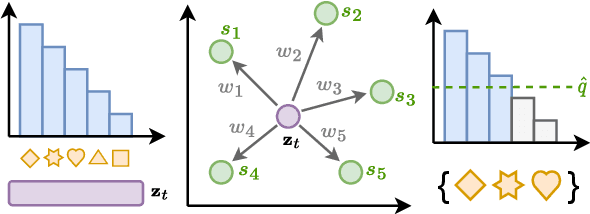
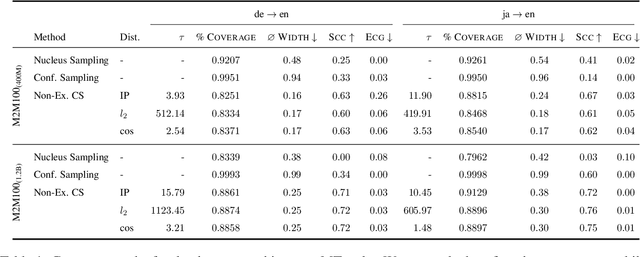
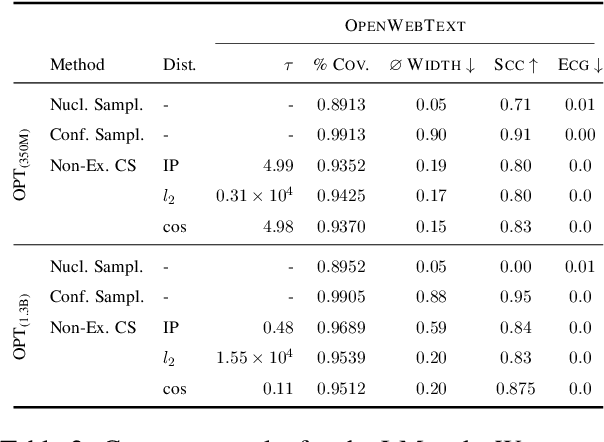
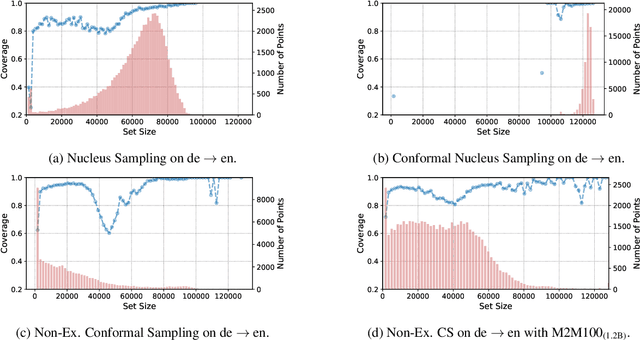
Abstract:Quantifying uncertainty in automatically generated text is important for letting humans check potential hallucinations and making systems more reliable. Conformal prediction is an attractive framework to provide predictions imbued with statistical guarantees, however, its application to text generation is challenging since any i.i.d. assumptions are not realistic. In this paper, we bridge this gap by leveraging recent results on non-exchangeable conformal prediction, which still ensures bounds on coverage. The result, non-exchangeable conformal nucleus sampling, is a novel extension of the conformal prediction framework to generation based on nearest neighbors. Our method can be used post-hoc for an arbitrary model without extra training and supplies token-level, calibrated prediction sets equipped with statistical guarantees. Experiments in machine translation and language modeling show encouraging results in generation quality. By also producing tighter prediction sets with good coverage, we thus give a more theoretically principled way to perform sampling with conformal guarantees.
 Add to Chrome
Add to Chrome Add to Firefox
Add to Firefox Add to Edge
Add to Edge